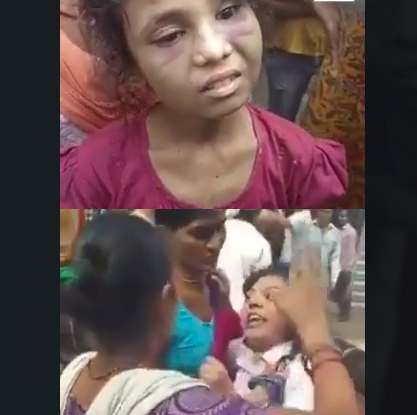A tragic incident unfolded in Jharkhand’s West Singhbhum district on Tuesday when a nine-year-old tribal girl was killed after an improvised explosive device (IED), allegedly planted by Naxalites, went off in the dense Saranda forest. The explosion occurred while the young girl had accompanied a group of villagers to gather firewood and leaves, a common daily activity for residents of the region. The blast once again highlighted the continuing threat that Naxal violence poses to innocent civilians in India’s tribal heartland.
The victim, identified as Siriya Herenj, was a Class 3 student of Digha Primary School. According to initial reports, Siriya had ventured into the forest around 7 a.m. with several villagers when a powerful explosion suddenly rocked the area. The deafening blast caused panic, and thick smoke engulfed the surroundings. When the dust cleared, the villagers realised that Siriya was missing. After a desperate search, they found her lifeless body a short distance away from the site of the explosion.
The devastated villagers carried her body back to Digha village on a makeshift wooden stretcher, walking through the same forest trails now feared to be laden with hidden explosives. Her remains were later taken to Chakradharpur for post-mortem examination. Local authorities confirmed that the explosion site lies just about three kilometres from a Central Reserve Police Force (CRPF) camp, underscoring the volatility of the region.
Security agencies suspect that the Naxalites had planted multiple IEDs in the area, intending to target patrolling security personnel. However, these crude explosives have ended up claiming the lives of civilians and animals alike, creating a pervasive sense of fear in the surrounding villages. Residents now dread venturing into the forest, even though collecting wood and leaves is their primary source of livelihood.
The incident has triggered renewed concern over the safety of civilians living in Naxal-affected zones. Following the explosion, security forces have intensified search and combing operations in the region, determined to locate and neutralise any remaining explosive devices. The local administration has also begun awareness drives, warning villagers to avoid unfamiliar forest routes and to immediately report suspicious objects to the authorities.
This tragedy comes at a critical time when the Central government has stepped up its counter-insurgency campaign against Naxal groups under a national plan to completely eliminate the movement by March 31, 2026. The death of a child amid these ongoing operations underscores both the human cost of the conflict and the urgent need for stronger coordination between security forces and local communities to prevent further civilian casualties.
While the government continues its mission to make India “Naxal-free,” incidents like these reveal the grim reality of how insurgent tactics continue to endanger lives far removed from the battlefield. For the villagers of West Singhbhum, the Saranda forest—once their source of sustenance—has now become a place of fear, marked by the echoes of violence and the loss of an innocent life.



